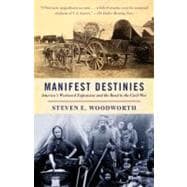
What is included with this book?
| List of Maps | p. ix |
| Preface | p. xi |
| The Two-Party System | |
| The Log Cabin and Hard Cider Campaign | p. 3 |
| Tyler, Clay and the Durability of the Two-Party System | p. 26 |
| Abolitionism | p. 40 |
| Westward Expansion | |
| The Oregon Trail | p. 57 |
| The Allure and the Danger of California | p. 78 |
| 6 | p. 91 |
| The Politics of Expansion | |
| Tyler and Texas | p. 107 |
| The Election of 1844 | p. 125 |
| Texas Annexation | p. 139 |
| War with Mexico | |
| Armies Along the Rio Grande | p. 151 |
| The Monterrey Campaign | p. 167 |
| New Mexico, Chihuahua, and California | p. 89 |
| Buena Vista | p. 212 |
| Veracruz, Cerro Gordo, and the Politics of Expansion | p. 235 |
| To the Gates of Mexico City | p. 256 |
| A Conquered Capital and a Negotiated Peace | p. 276 |
| The Political System and the Controversies of Expansion | |
| The Election of 1848 | p. 297 |
| The California Gold Rush | p. 312 |
| California and the Expansion of Slavery | p. 329 |
| The Struggle for Compromise | p. 341 |
| Notes | p. 359 |
| Index | p. 395 |
| Table of Contents provided by Ingram. All Rights Reserved. |
The New copy of this book will include any supplemental materials advertised. Please check the title of the book to determine if it should include any access cards, study guides, lab manuals, CDs, etc.
The Used, Rental and eBook copies of this book are not guaranteed to include any supplemental materials. Typically, only the book itself is included. This is true even if the title states it includes any access cards, study guides, lab manuals, CDs, etc.